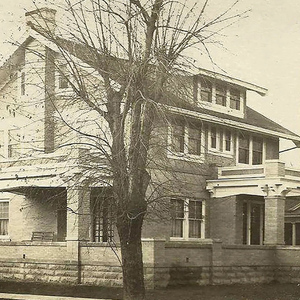I have read in several places that it is beneficial to have some sort of capillary break installed between the footings and poured concrete walls. What sort of material can be used for the capillary break? Secondly, how many of you actually do something like this when you build a house? I’m building the house for myself and I want the basement to be as comfortable and dry as possible.
Discussion Forum
Discussion Forum
Up Next
Video Shorts
Featured Story

A small and dated house lends its foundation to a stylish new home with more than twice the space.
Highlights
"I have learned so much thanks to the searchable articles on the FHB website. I can confidently say that I expect to be a life-long subscriber." - M.K.
Fine Homebuilding Magazine
- Home Group
- Antique Trader
- Arts & Crafts Homes
- Bank Note Reporter
- Cabin Life
- Cuisine at Home
- Fine Gardening
- Fine Woodworking
- Green Building Advisor
- Garden Gate
- Horticulture
- Keep Craft Alive
- Log Home Living
- Military Trader/Vehicles
- Numismatic News
- Numismaster
- Old Cars Weekly
- Old House Journal
- Period Homes
- Popular Woodworking
- Script
- ShopNotes
- Sports Collectors Digest
- Threads
- Timber Home Living
- Traditional Building
- Woodsmith
- World Coin News
- Writer's Digest


















Replies
i've done it since i became aware of the problem..
one way is to simply put a poyl film over the footing before you pour the wall..
another is to coat the footing with an asphalt based foundation coat before the wall is poured
Mike Smith Rhode Island : Design / Build / Repair / Restore
I am just a homeowner who lurks here, but after reading that this technique was recommended on buildingscience.com I asked my contractor to do this in my new home. He (and his concrete/walls sub) had never heard of doing this. He used thoroseal, which was sprayed on the footer before the wall was poured.
There was an article in the JLC that stated that capillary action can pull water up to 8 feet in concrete, even if the outside wall is well waterproofed. I don't want that going in in my home.
I am always a bit nervous when I'm doing something that is not the norm for a contractor, but I think personally that the capillary break just makes sense and am glad we did it.
FWIW, and back to lurking.
It's standard practice in most commercial construction....that's not a mistake, it's rustic
Mike,
Did you have a problem with this ? How did you know ? Didn't your concrete sub scream with the addition of poly over the footers before the panels go down ? It's hard enough getting them to build straight walls !
One other thing to Jeff, in all of our commercial pours, I don't remember ever putting waterstop in a footer pour for a wall/footer connection. Even in a cooling tower that we built which had volumes of interior water. Are you thinking of something different ?
carpenter in transition
Edited 7/6/2003 7:24:12 AM ET by TIM_KLINE
Thank you for your responses. My poured wall contractor had not heard of sealing the footings against capillary action, and I wanted a little more information before I try to get him to try something new. I think he will let me coat the footing with a sealing product such as those mentioned as long as it won't involve additional cost or labor to him.
David, your slab gravel is above the footing. Therefore it won't help. The footing can pull water from the damp/wet ground below it even if you have a well designed footer drain.
tim, my subs don't scream about anything..
we are all in the business of delivering the best product we can.. if it involves extra work, then it involves extra money...in both of those instances, there was no extra work by my sub.. we did it allMike Smith Rhode Island : Design / Build / Repair / Restore
jeez, i think i'm moving to rhode island.............
no screaming ? sounds dull. although i am happy for you. anyway, did you have a problem with this ? and, how did you know ?
carpenter in transition
tim, i didn't have a problem with this.. we did it so we wouldn't have a problem...
i decided ot do it based on conversations here on BT... now it is just in the category of "good practises"Mike Smith Rhode Island : Design / Build / Repair / Restore
From what I've heard the best way to get out of the water is to use gravel under the slab with drainage tile and or pipe over to a sump pump. If the water table is high or is once in a while you have to actively pump/drain it out from under the slab/footings. Then the waterproofing on the outside of the walls will work. You can use the PVC pipe under the slab to get rid of radon also.